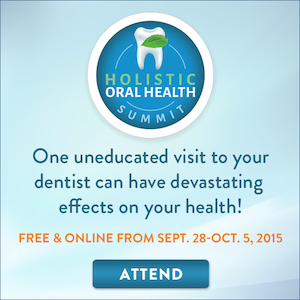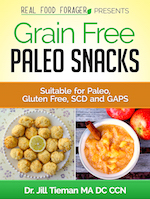Dr. Weston Price traveled the world to study isolated cultures who did not eat the displacing food of modern commerce. He came to the conclusion that the healthiest people were those who had access to seafood. From this we can surmise that the nutrients in seafood are very important for human health. The multi-million dollar supplement industry has responded with all kinds of synthetic laboratory replications of nutrients found in seafood — in pill form. You don’t have to take a pill! One of the most powerful anti-oxidants on this earth is found in a very popular fish.
Astaxanthin
Astaxanthin is the substance that gives the beautiful red color to salmon. It is a fat-soluble, pigment called a xanthophyll, which belongs to the carotenoid family of compounds. These carotenoids give things in nature all kinds of beautiful colors, from greens to oranges to reds, in fish (and birds) as well as fruits, vegetables and flowers.
There are actually over 700 naturally occurring carotenoids with long names. You are probably familiar with a few of them, such as beta carotene, lutein, alpha-tocopherol, lycopene, to name a few.
Astaxanthin is now being studied not only because of its powerful anti-oxidant properties, but also because it has been found to be a strong anti-inflammatory agent.
Sources of Astaxanthin
Most people are surprised to find out that although it is a carotenoid, astaxanthin is not found in plants. It is only found in two places. It is produced by the microalgae called Haematoccous pluvialis, but only when their water supply has dried up and they are exposed to intense sunlight. In order to protect themselves against ultraviolet radiation, the algae produce this substance called astaxanthin.
The other source of astaxanthin are the sea animals that consume the algae that makes it, such as salmon, shellfish and krill. Most crustaceans, including shrimp, crawfish, crabs and lobster, are tinted red because the algae they eat contains astaxanthin.
Astaxanthin is a special carotenoid
Astaxanthin is the most powerful of all the anti-oxidants. It is more powerful than vitamin C, vitamin E and beta carotene.
Astaxanthin crosses the blood/brain barrier and the blood/retina barrier, giving protection to the brain, the nervous system, and the eyes. This reduces your risk of neurological diseases like dementia and Alzheimer’s as well as eye disorders like cataracts and macular degeneration which can result in blindness.
Astaxanthin absorbs UVB rays which reduces DNA damage. It is also soluble in lipids so that it is easily incorporated into the cell membranes. Astazanthin is a potent anti-inflammatory agent.
Inflammation is your worst enemy
As a normal part of the healing process, inflammation is a necessary aspect of healing acute injuries and infection.
However, if inflammation becomes a chronic and silent condition that is when trouble starts. It may be operating under the radar so to speak, causing micro injuries to essential organs such as the heart, brain and immune system.
These tiny injuries may lead to any number of diseases or disorders. As more studies emerge, we are finding out how dangerous chronic inflammation really is.
How to measure chronic inflammation
There are two conventional blood tests that are used to measure systemic inflammation. They are C-Reactive Protein (CRP) and Erythrocyte Sedimentation Rate (ESR or Sed Rate). These are general indicators of inflammation.
CRP is released into the bloodstream when the immune system is fighting inflammation. It is produced in the liver and coronary arteries and may be better than a lipid profile in predicting heart disease. At the very least it should be included in routine yearly bloodwork.
ESR is the rate at which red blood cells sediment in a period of one hour. When an inflammatory process is present, the high proportion of fibrinogen in the blood causes red blood cells to stick to each other and and these will fall out more quickly. The higher the number, the higher the inflammatory substances and that indicates more inflammation in the body.
Research with astaxanthin
In 1995 in the journal Carcinogensis, Tanaka, et al found that astaxanthin protected rats from colon cancer when they were given food with astaxanthin in it. Their conclusions were that astaxanthin is a possible chemopreventer for carcinogenesis of the colon, and that such effects may be partly due to suppression of cell proliferation. They have conducted other studies with urinary bladder and oral cavity cancers in rats and have come to the same conclusions.
In 2009 a study was published in the journal Future Cardiology that studied astaxanthin as a potential antioxidant and anti-inflammatory therapeutic agent in models of cardiovascular disease. The authors of these studies cited eight other clinical studies that had been conducted in over 180 humans using astaxanthin to assess its safety, bioavailability and clinical aspects relevant to oxidative stress, inflammation or the cardiovascular system. These studies have demonstrated reduced markers of oxidative stress and inflammation and improved blood markers. Animal studies have demonstrated protective effects from prior administration of astaxanthin both intravenously and orally. They were using a supplement here. Can you imagine how powerful eating food with astaxanthin would be?
In 2010 another study published in the journal Nutrition and Metabolism, found that astaxanthin decreased oxidative stress and inflammation and enhanced immune response in humans. Their objective was to study the action of dietary astaxanthin in modulating immune response, oxidative status and inflammation in young healthy adult female human subjects. They found that dietary astaxanthin decreases a DNA damage biomarker and acute phase protein, and enhances immune response in young healthy females.
Astaxanthin is present in food
The cultures that Dr. Price studied that had access to seafood were, in his estimation, the healthiest. There are many nutrients in seafood, some of which reside in the fat. Astaxanthin is a fat soluble substance that infiltrates the cell membranes and tissues of wild salmon.
Since salmon are smaller fish, they are also have less mercury. Eating salmon once or twice a week is very beneficial for all the reasons above. Salmon also provides exceptionally nutritious fat because of the EPA/DHA content.
Natural versus synthetic astaxanthin
The astaxanthin molecule can be oriented in different ways, producing different isomers. The most common geometric configuration in both synthetic and natural astaxanthin is the more thermodynamically stable all-E isomer. However, the synthetic isomer is oriented a different way. It appears that natural astaxanthin tends to produce higher pigmentation in rainbow trout compared to synthetic astaxanthin provided at the same dietary concentration.
Farmed salmon are feed synthetic astaxanthin in order to produce a brighter red color that is favored by consumers. Synthetic astaxanthin is manufactured in a laboratory from petrochemicals or petrochemical derivatives.
Nearly all the studies demonstrating astaxanthin’s powerful health benefits for humans were conducted using natural astaxanthin.












